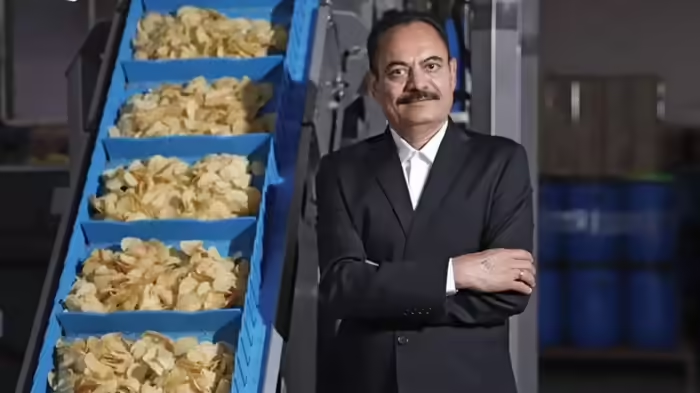
Balaji Wafers – a name synonymous with snacks for millions across India – is today valued in billions. But its journey began with struggle, determination, and a vision that refused to be daunted by hardship.
Humble Beginnings
Chandubhai Virani was born on 31 January 1957 in a poor farmer’s family in Jamnagar, Gujarat. Due to financial constraints, he could not pursue education beyond the 10th grade. By the age of 15, Chandubhai’s family moved to Dhandhuka in search of livelihood. Using a small amount of savings from his father, Chandubhai embarked on a journey that would later create one of India’s largest snack empires.
Early Struggles and Learning
Chandubhai and his two brothers borrowed ₹20,000 to start a small agricultural products and equipment business in Rajkot. After two years of struggle, the venture failed. To support his family, Chandubhai took up several small jobs – selling snacks and posters at a cinema canteen, repairing torn seats for minimal pay, and undertaking other odd jobs. Financial hardship was severe; at one point, he was even at risk of eviction for unpaid rent. Yet, his perseverance helped him repay all debts and stay focused on his dream.
A Glimmer of Hope
The breakthrough came when the brothers secured a ₹1,000-per-month contract for their exceptional canteen service. Observing the popularity of wafers among cinema-goers, Chandubhai invested ₹10,000 of his savings to start producing chips in a small shed at home. The superior taste and quality quickly won hearts, motivating him to take bolder steps.
The Birth of Balaji Wafers
In 1989, Chandubhai set up Gujarat’s first potato wafer factory in Rajkot’s Aji GIDC, supported by a bank loan. By 1992, the Virani brothers officially founded Balaji Wafers Private Limited, inspired by a small idol of Lord Hanuman, a cherished symbol in their home.
Current Scale and Revenue
Today, Balaji Wafers reports annual sales of ₹6,500 crore and net profits of around ₹1,000 crore. It dominates organized markets in Gujarat, Maharashtra, and Rajasthan, holding nearly 65% market share in potato chips, namkeen, and bhujia. Despite its limited geographic presence, Balaji Wafers is India’s third-largest branded snack company, after Haldiram and PepsiCo.
Secret to Success
Balaji Wafers owes its success to a low-cost, high-efficiency model. The company spends only about 4% of revenue on advertising, while competitors spend 8–12%. This allows more investment in production, ensuring quality and affordability. With four major factories, Balaji produces 65 lakh kilos of potato chips and 100 lakh kilos of namkeen daily.
Future Plans
Chandubhai Virani has revealed that following the near-final deal with US-based private equity firm General Atlantic – which could value the company at $4 billion (₹350 billion) for a 7% stake – Balaji Wafers may consider an Initial Public Offering (IPO) instead of selling further stakes. Virani confirmed that the deal is finalized from their side, signaling a significant expansion phase for the snack giant.
From selling chips in a cinema canteen to building a multi-billion-rupee empire, Chandubhai Virani’s story is one of grit, foresight, and relentless determination – a true inspiration for aspiring entrepreneurs.
Discover more from SD NEWS agency
Subscribe to get the latest posts sent to your email.